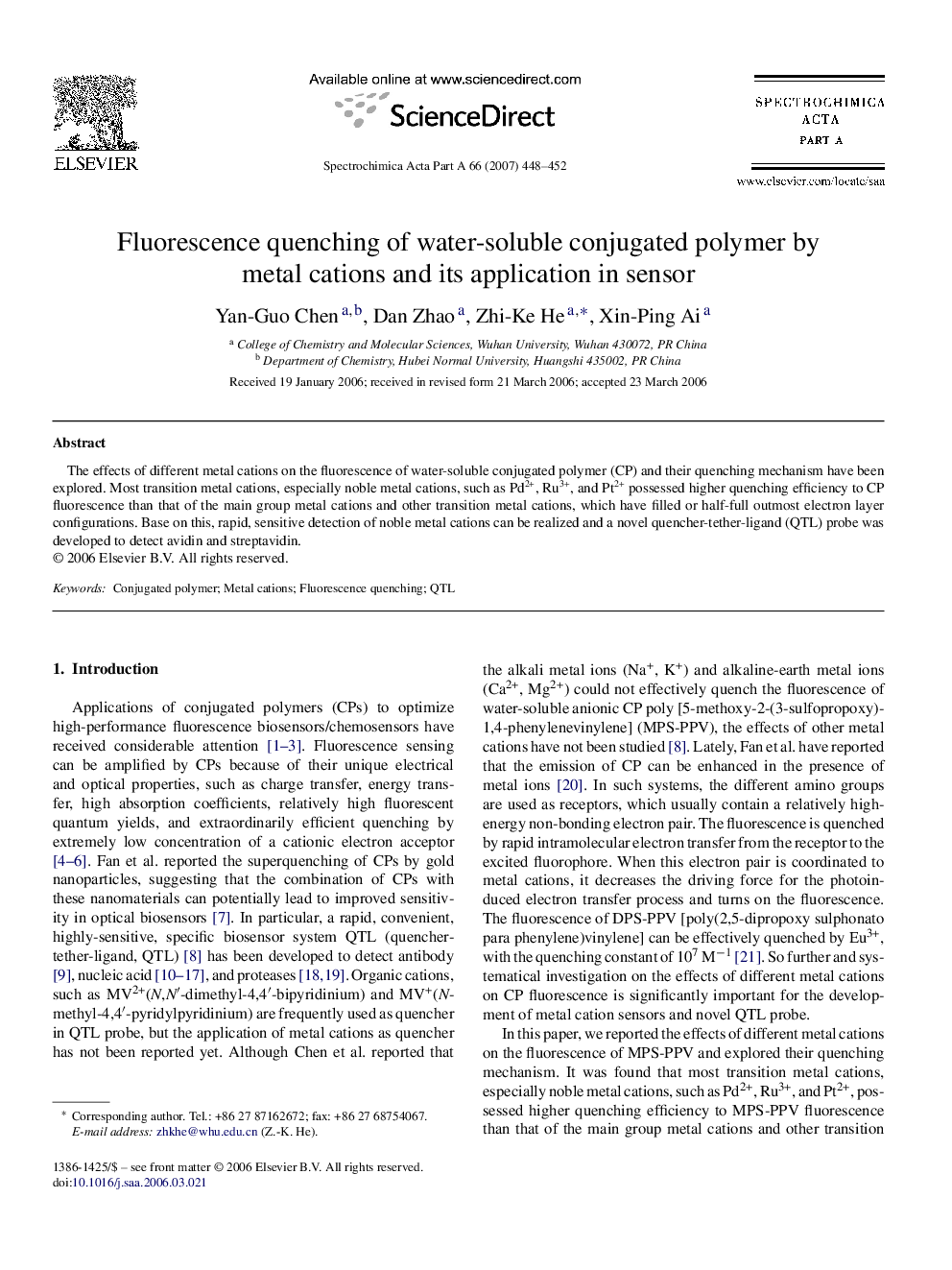| Article ID | Journal | Published Year | Pages | File Type |
|---|---|---|---|---|
| 1236040 | Spectrochimica Acta Part A: Molecular and Biomolecular Spectroscopy | 2007 | 5 Pages |
Abstract
The effects of different metal cations on the fluorescence of water-soluble conjugated polymer (CP) and their quenching mechanism have been explored. Most transition metal cations, especially noble metal cations, such as Pd2+, Ru3+, and Pt2+ possessed higher quenching efficiency to CP fluorescence than that of the main group metal cations and other transition metal cations, which have filled or half-full outmost electron layer configurations. Base on this, rapid, sensitive detection of noble metal cations can be realized and a novel quencher-tether-ligand (QTL) probe was developed to detect avidin and streptavidin.
Related Topics
Physical Sciences and Engineering
Chemistry
Analytical Chemistry
Authors
Yan-Guo Chen, Dan Zhao, Zhi-Ke He, Xin-Ping Ai,
